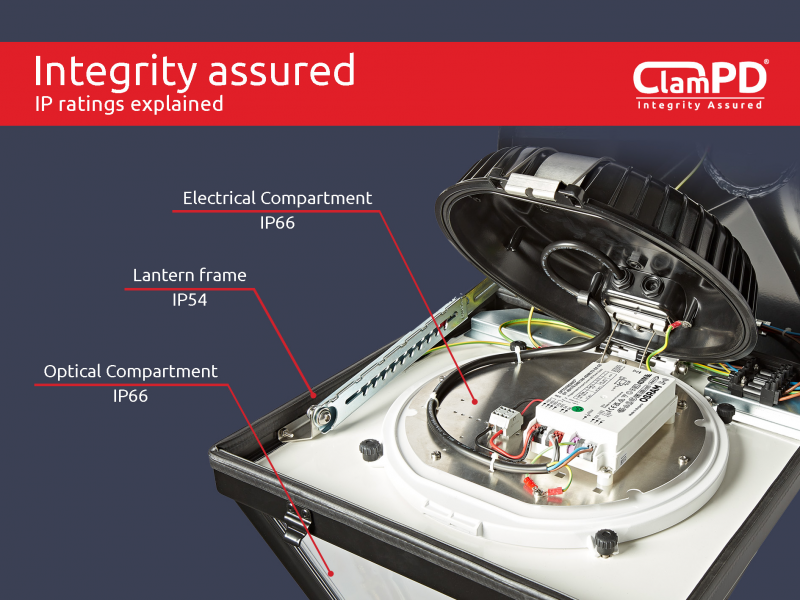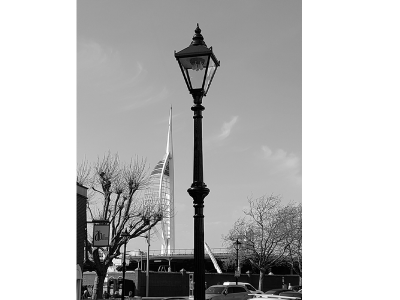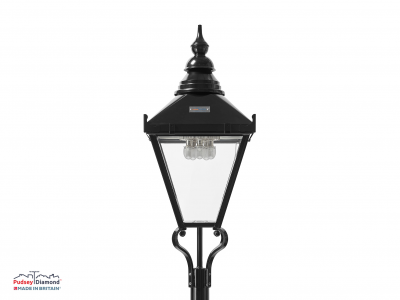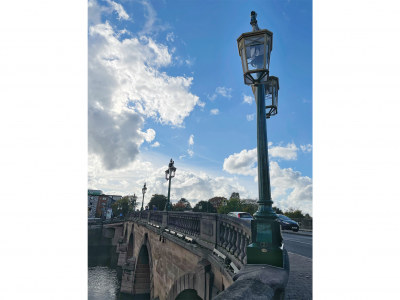IP ratings explained
When purchasing heritage luminaires or working with electrical enclosures of any kind its inevitable that you will come across IP ratings, and understanding what they mean is incredibly important to demonstrate the quality and integrity of the product and support the claims of the organisation.
What is an IP rating?
IP stands for ingress protection and is used widely to specify the level of ingress protection of an enclosure; this includes the level of protection against liquids, and solids like dust. IP ratings have been used to distinguish the difference between waterproof and water-resistant and are even used to test iPhones. They are moderated and provided by the International Electrotechnical Commission (IEC) who are a global organisation working to maintain safe and reliable trade.
An IP rating is composed of 2 digits:
The first digit indicates the level of protection against solids rom 0 (no protection) to 6 (dust-tight).
The second digit indicates the level of protection against liquids from 0 (no protection) to 9 (high-pressure and temperature water jets).
The table below provided by the IEC helps us to understand the different levels of resistance.
What is considered a good IP rating?
A good IP rating will vary depending on the product and its usage, however when it comes to lighting anything below IP44 is considered low and these lights will mostly be used for indoor lighting with extremely minimal exposure to dust and water. IP ratings from 44-65 are suitable for indoor and some outdoor use providing the light is well sheltered from weather conditions. IP ratings that are 65 and above are considered to be waterproof and are ideal for external lighting.
Its important to note that with heritage luminaires electrical, optical and lantern frame often have different ratings, so it goes without saying that you should always ask your supplier for certification to support IP claims and ensure products have been rigorously tested at a fully accredited test laboratory to understand the true level of ingress protection of the luminaire.
What to expect from a Pudsey Diamond Lantern?
At Pudsey Diamond Engineering we pride ourselves on our high integrity and quality standards throughout our product range and particularly with our heritage lanterns.
Its important to note that with heritage luminaires the electrical, optical and lantern frame often have different ratings, so it goes without saying that you should always ask your supplier for certification to support IP claims and ensure products have been rigorously tested at a fully accredited test laboratory to understand the true level of ingress protection of the luminaire.
To ensure the integrity of our lanterns our team have designed our very own trademarked clamp system known as ClampPD®, thanks to the use of the compression rubber gasket we are able to achieve an industry leading rating of IP66 in both the gear and optical compartments across our lanterns and retrofit optics.
Below is our Dickens lantern as an example.













